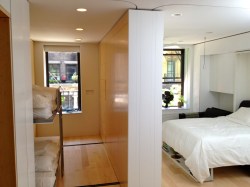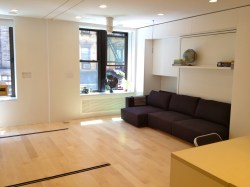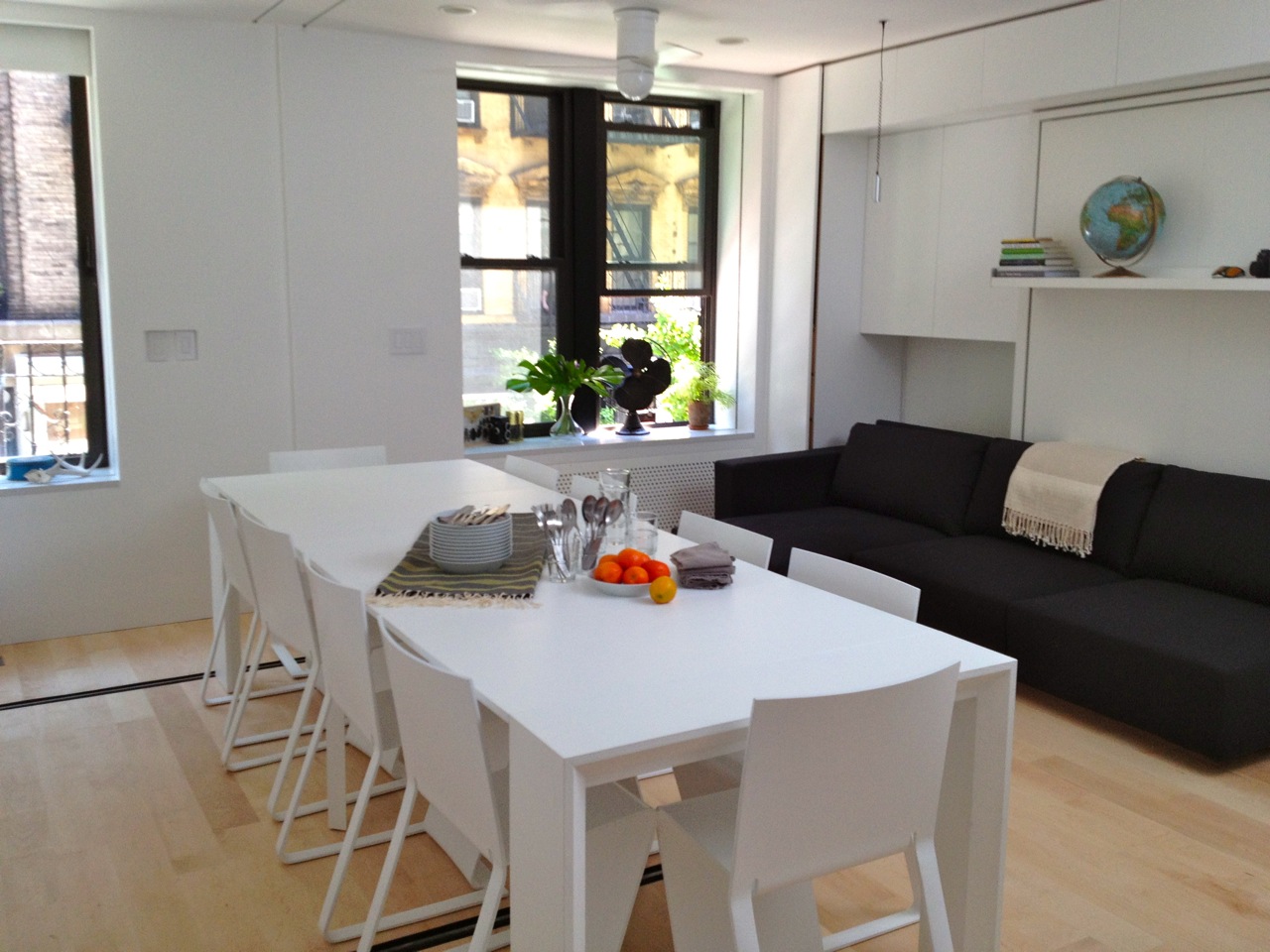Among the jet-setting elite, is downsizing the new Lake Como vacation house? That’s what Graham Hill, founder of TreeHugger, is banking on with LifeEdited, his nascent company catering to those striving for a life of “more money, health and happiness with less stuff, space and energy,” as its manifesto reads. LifeEdited’s splashy first prototype is a 420-square-foot Manhattan tenement, renovated — to the tune of over $400,000 — to be a model of slick, hyper-functional, scaled-down living.
Overall, I’m in favor of the whole simplicity trend. U.S. homes are gigantic compared to their counterparts around the world, so I cheer the apparent decline of the McMansion if it means we’re becoming a little more like all those other countries where a huge-ass house is not the ultimate signifier of prosperity. I’ve always thought that if I ever struck it rich, I’d rather live in a normal house and spend my money on travel and fine dining and an abundant supply of Smartwool socks. (We stoic Seattleites tend to find blatant displays of wealth a bit uncouth; we prefer our millionaires clothed in Gortex, not Gucci.) So I totally respect and identify with rich people who don’t want to live in mansions.
But reading about Hill’s minimalist version of high-end living (or high-end version of minimalist living, depending on how you look at it) just makes me think that anyone who would pay $400,000 to create the 420-square-foot apartment of their dreams has probably never lived in a normal apartment that small before. It looks pretty neat in its spare demonstration form, but a little clutter and grime go a long way in a few hundred square feet.

The “dining room” of LifeEdited’s tiny apartment. (Photos by LifeEdited.)
Not that we at Grist don’t have our own infatuation with mini-homes and pared-down living. We — and our readers — loved the dude with only 15 things and the teenager who built his own tiny house. And this is no hit job on a rival green blogger, either; Grist founder Chip Giller has a soft spot for anyone who shares his vision of making green second nature.
But the whole idea of LifeEdited just seems so … unnecessary. Sure, even those of us without money to spare get the appeal of keeping our lives uncluttered by possessions. In a consumer society like ours, we all have crap we don’t need, and we’ve heard enough stories of suicidal lottery winners and depressed trust-fund kids to know the destructive effects of equating happiness with material wealth. Which makes the idea of spending gobs of money in pursuit of a more simplified life inescapably ironic. We proles are already living that kind of life — doing more with less — exactly because we don’t have money to spend on the perfect home.

The “dining room” converts to two “bedrooms.”
If Hill and people like him really want to live with “less stuff, space and energy,” couldn’t they just rent that tiny apartment as-is? Why the need for the expensive remodel? Well, Hill explains that when you add up the square footage of the different “rooms” created by the apartment’s various fold-out, pop-up capabilities (kitchen, bathroom, living room, dining room, office, master bedroom, and guest bedroom — just not all at once), the place actually has 1,100 square feet of space. (The average rent for a one-bedroom apartment in New York City is $2,490. Makes me want to choke, but still doesn’t make $400,000 for a studio retrofit seem worth it.)
“I think it’s kind of cool for Graham to come up with a sustainable way of living in cities instead of showing million-dollar solar panels on houses in the Napa Valley, which is not the way most people live,” Hill’s friend and Gawker founder Nick Denton told The New York Times. But this LifeEdited apartment is not the way most people live, or aspire to live, either — most of us, when imagining our dream homes, probably think of a house in Napa Valley before a tiny apartment in New York City. And anyway, solar panels on a California estate could probably produce enough energy to power a whole apartment building in Manhattan.

Plenty of space in the “living room.”
And is it really so sustainable to live in such a small apartment if, like Hill, you spend most of your time flying around the world, living and working “out of a series of hotel rooms and small apartments in cities like Buenos Aires, Bangkok and Barcelona, to name just a few”? Hill’s practice of buying carbon offsets to compensate for his travels exemplifies the mindset behind a project like LifeEdited: the idea that sustainable living, like anything else, can simply be bought.
What is it about wealth that turns straightforward concepts into expensive ones? (Exhibit A: the SUV with built-in stationary bike.) Many of us work daily to save energy, space, and money — all at the same time. I worry that concepts in the LifeEdited vein — like Whole Foods shopping classes or pricey organic cotton/hemp clothing — simply further the idea that “sustainability” is a branded lifestyle, available to those who can afford it. In an ideal world, a sustainable life would be the easiest, the cheapest, the most accessible.
I know everyone has better ideas for what to do with rich people’s money than the rich themselves, but I can’t help thinking that the resources of someone like Hill would be put to better use lobbying to end corporate subsidies or investing in public transportation, or, hell, even putting solar panels on McMansions, which would at least make all that roof space good for something. As a design achievement, the LifeEdited apartment is impressive, and would certainly come in handy if our major cities start being demolished by sea-level rise and we all have to squeeze into the ones that are left. But as a marketable way of living, it seems like a gimmick, a complicated way of achieving a commercialized version of “simplicity.”





